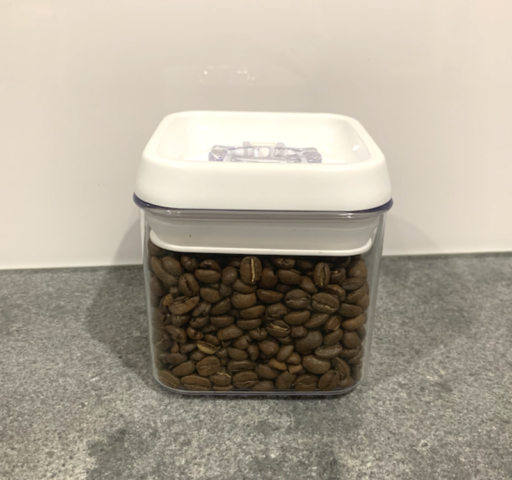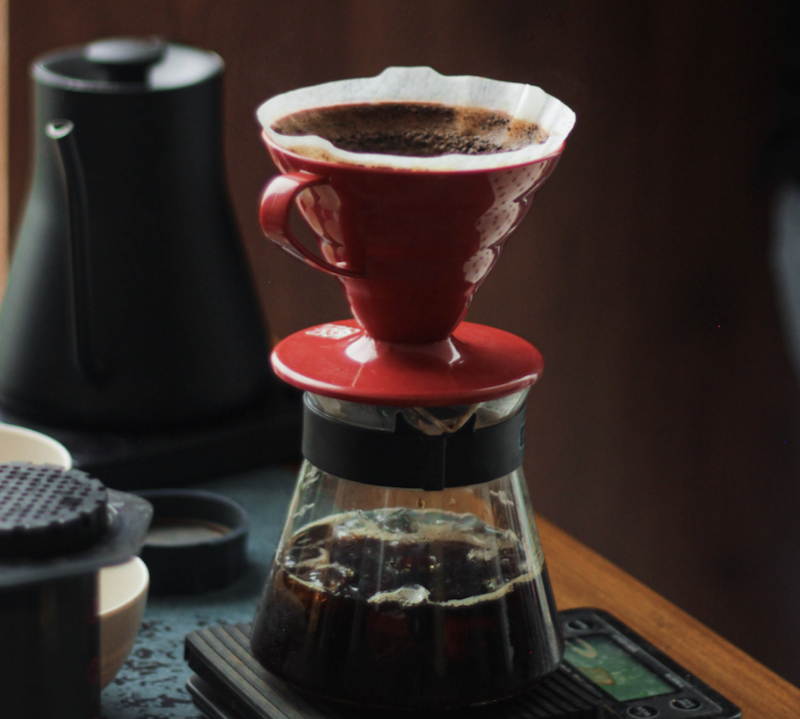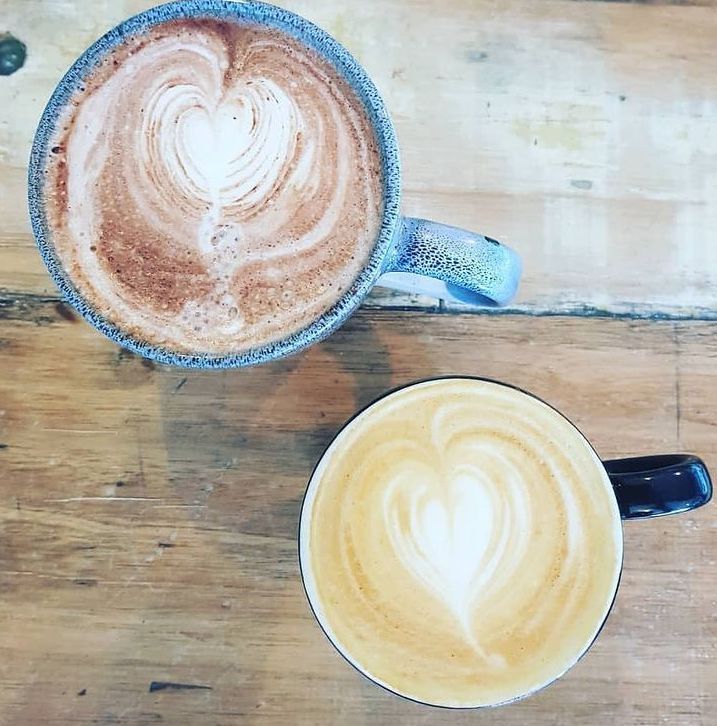We all enjoy heading down to our favourite coffee shop, meeting friends, and enjoying a smooth brew made by our local barista. But wouldn’t it be nice if some days you could have a slow morning and still enjoy a delicious coffee in the comfort of your own home?
Take the tips from this guide to enhance your home brew coffee and turn these dreams into a reality.
Equipment required
Coffee storage

Air, moisture, heat, and light – your coffee beans worst enemies.
Coffee beans begin to lose freshness the minute they are finished roasting, the older your beans get the less fresh they become.
An air-tight and opaque storage container stored in a cool, dry place is the perfect way to ensure that your beans remain as fresh as possible, for as long as possible.
Kitchen scale
Utilising a digital kitchen scale to accurately weigh your coffee will ensure that you are able to achieve the perfect ratio of coffee to water, every time.
Coffee beans vary in size, type, and roast, therefore measuring your coffee with a teaspoon or bean count is unreliable. Measuring by weight as opposed to volume will make for the perfect brew regardless of the above factors.
Coffee grinder
Keeping your coffee in bean form and grinding it when you’re ready to brew is the best way to sustain the quality and freshness of your coffee. An electric coffee grinder is preferable as it is simple to use and does the job fast, making it particularly convenient. Ensuring that your grinder has size variance is also ideal as this will enable you to alter the grind of your beans according to your preferred taste and coffee type.
Hot water kettle
In addition to perfecting your coffee measurements, perfecting your water measurements and temperature is equally as important. The ideal coffee kettle should have the following features:
+ A gooseneck shape – as this allows for a more precise pour
+ Electric – for your convenience in the water-heating process
+ Variable temperatures – to heat the water to your preferred temperature and achieve optimal extraction
Chosen brewing method

The four most popular styles for brewing coffee at home include a French press, AeroPress, pour over and a drip coffee machine. Each of these methods vary in cost, effort and the qualities of the coffee that they brew. Some pros and cons as well as an approximate cost of each option are listed below.
French press
Pros: makes a more flavoursome brew, with a deeper sweetness and oily finish
Cons: produces more coffee than what it required therefore creating waste
AeroPress
Pros: simple use, no wastage, creates a brew that isn’t scalding hot
Cons: specific equipment is required
Pour over
Pros: offers a slow and steady water distribution creating a more robust flavour than alternative methods
Cons: various steps to follow making this a more difficult brewing option. Things like filters might be needed.
Drip coffee machine
Pros: easy to use and can brew coffee in larger quantities
Cons: as it is automated the only modifications you can make are to the grind size and type of bean used
What to look for when purchasing coffee beans
To put it simply, there are 7 particularly important things to look for when purchasing coffee beans:
Whole beans
Purchasing whole beans as opposed to pre-ground coffee is the number one way to ensure that you are able to achieve a fresh, tasty cup of coffee.
Properly sealed packaging
Again, to ensure freshness, it is important to ensure that the beans are stored in airtight packaging, and not in barrels at the store.
Understand the origin of the beans
Coffee beans made by proud coffee roasters will provide as much information as possible regarding the farms, regions, and roasting locations. A lack of information often indicates a lack of pride and understanding, which can only make for poor quality beans.
Check the roast date
Perhaps the most essential piece of information on your bag of coffee beans. You want to purchase beans that were roasted no longer than 2 weeks prior to your purchase date. Beyond this stage, the beans will begin to lose freshness and therefore flavour.
Purchase direct
The perfect cup of coffee is all about freshness and purchasing your beans directly from a high-quality roaster goes a long way in guaranteeing this. buying smaller quantities of beans at regular intervals rather than larger quantities less regularly will ensure you always have fresh beans available.
Know your flavour preference
There are 4 colour categories of coffee bean roast, varying significantly in flavour therefore making this an entirely personal choice.
Light roasts: preferred for milder coffee varieties
Medium roasts: produces a more robust flavour and a non-oily surface
Medium-dark roasts: some oil on the surface and a slightly bittersweet aftertaste
Dark roasts: produces shiny black beans with an oily surface and a pronounced bitterness
Giving back
When you’re sipping your morning coffee it is always nice to know that the brand you have chosen give back to the coffee farming communities. Coffee farming is hard work, it is only fair to help those who are behind the delicious brew you get to enjoy each day.
How to grind your coffee beans
The fastest and most convenient method to grind your coffee is using an electric coffee grinder as explained above. If, however, this is not available to you there are several alternative ways to grind your beans.
Blender
Ok, this might sound strange, but using a blender is a simple alternative to grind your coffee, however, there is no way of making the grounds a consistent size. Regardless, using the “grind” or “pulse” setting on your blender will achieve a good, usable consistency. Make sure you have a really heavy duty blender – otherwise it won’t work, and you will break your $20 Aldi smoothie machine.
Food processor
This method is similar to a blender in the way of usage and results, however, you will require a larger quantity of beans due to the size of the food processor. This will in turn produce more ground coffee which you will need to store in an airtight container for future use. Again needs to be a good quality one. But really, just get a grinder – then you aren’t going to blunt your food processor’s blades.
By hand
A blender or food processor will only get you so far and neither of which will allow you to achieve a super fine grind, which is where grinding your beans by hand may come in handy (lol). Using a rolling pin, mortar and pestle, hammer or garlic press will allow you to manually crush your beans to your desired grind size, although will take longer and require more persistence to achieve. Also, you arent blunting your food processor and blender blades.
How to brew your coffee

The way in which to brew your coffee will depend on your chosen brewing method as listed above. Selecting your brewing method is based entirely on personal preference where a process of trial and error may be the best way to determine what works for you.
Tips to improve your coffee
In addition to the considerations explained throughout this guide – using correct storage, weighing your coffee, and grinding your coffee when required – here are some additional tips to help you achieve a café quality coffee at home.
Warm the cups
In a café, the coffee cups are often stored on top of the coffee machine as this acts as a heater to warm the cups. Doing so improves the body of the coffee as well as its overall sweetness. This simple touch can be emulated by you at home by simply running some hot water into your cup before pouring.
Filtered water
All brews consist of just 2 original components – coffee and water. Whilst the coffee beans may seem like the only important part of this combination, the water should not be ignored. Without overcomplicating your cup of coffee, using filtered water will simply improve the overall taste.
Practice
Practice makes perfect. Brewing coffee is an art which can only be mastered through trial and error. Learning about and getting comfortable with your beans, equipment and what works for you is the only way to eventually achieve a café quality, home brewed cup of coffee.
Common mistakes of making at home coffee
If you feel as though you are doing everything right yet are still unable to achieve that perfect coffee, perhaps you are making one or more of these common brewing mistakes.
Incorrect measurements
As explained above, it is important to measure your coffee based on weight rather than volume. Too much coffee will be stale, salty and lack depth of flavour, whilst too little coffee will result in a thin, watery taste. To avoid making this mistake, use a scale to weigh your coffee according to your grinding and brewing method.
Not properly cleaning your coffee machine
Cleaning your coffee machine is the only way to get rid of the acidity from previous brews which can lead to yeast, mould and bacteria. However, beyond the need for basic hygiene, an unclean coffee machine will distort the natural taste of your coffee, leaving it with a burnt, salty flavour. To avoid this, remove the brewing basket and allow it to soak in a sink of hot water and vinegar as soon as you are finished brewing.
Using boiling water
Using actively boiling water when making your coffee will over-extract your beans, resulting in a bitter and acidic tasting coffee. An ideal water temperature range is between 90.6°C to 96.1°C although this may be difficult to determine at home. Instead, another way to avoid this mistake is to boil the water, remove it from the heat source and allow it to sit for 30 seconds before slowly pouring it onto the ground coffee.
Using uneven coffee grounds
Achieving a consistent coffee grind size may be difficult depending on your method of grinding, however it is important if you are wanting a coffee with the premium taste, colour, and aroma. The only real way to avoid this mistake is to invest in a high-quality coffee-grinder or to pay extremely close attention to your hand ground beans.
Brewing coffee at home is a true art which can be impacted, positively or negatively, by many factors. Using this guide to understand some of those factors and incorporate our advice into your daily brewing will have you heading in the right direction to achieve that café quality cup of coffee in the comfort of your own home.




